The Teapot asterism is located in the constellation Sagittarius, and is quite easily discernable as a teapot-shaped pattern of stars in the summer sky.
It's located within Sagittarius, which is one of the 88 formal constellations, but the Teapot itself is a informal collection of stars known as an asterism.
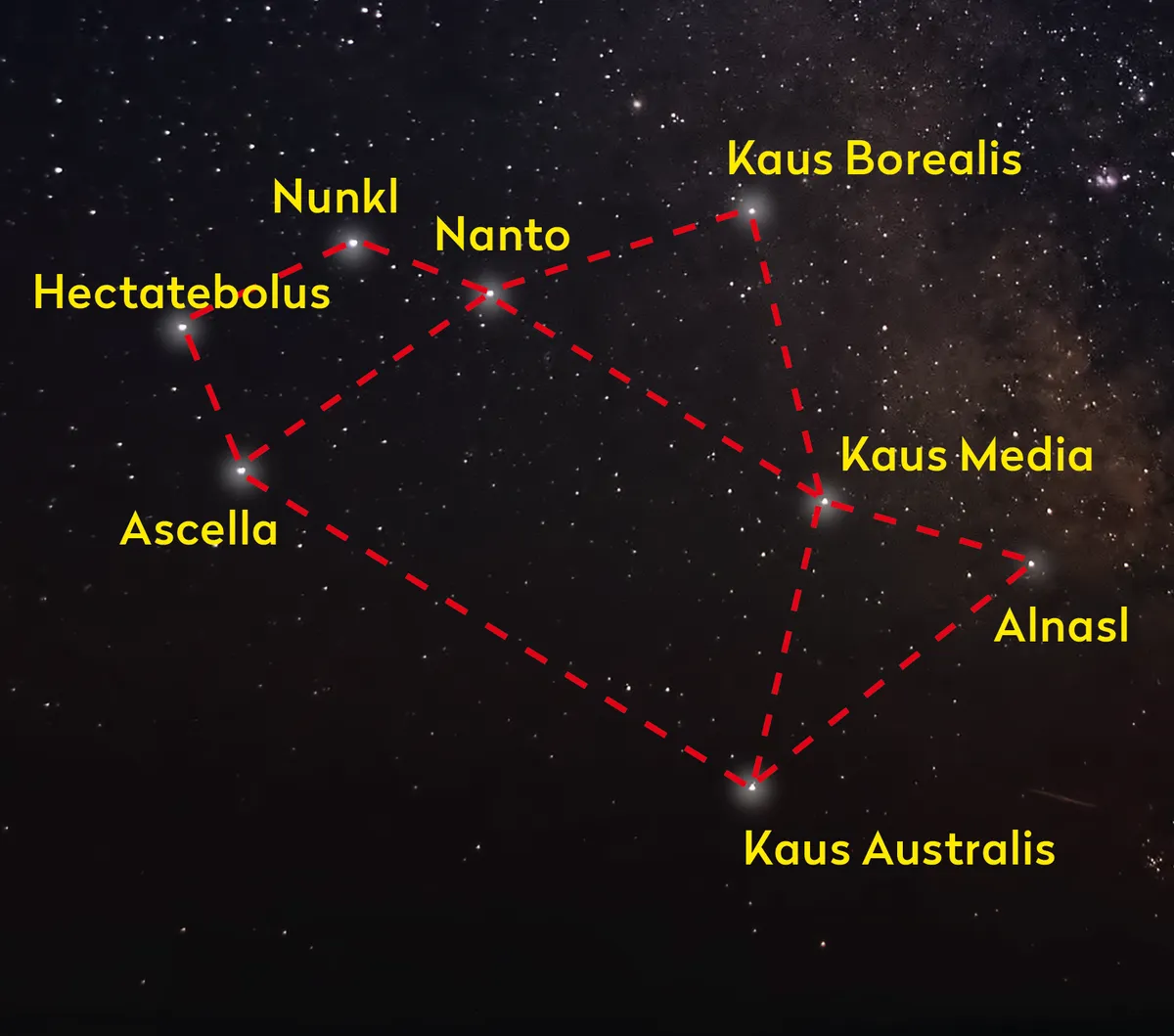
Once you spot the Teapot asterism, get out your telescope observe these 6 deep-sky targets, made up of nebulae and star clusters.
Some of them you'll find in the famous Messier Catalogue of deep-sky objects.
To help you locate each one, download our chart showing Teapot deep-sky objects (PDF).
1 - M8

Our tour of Teapot asterism deep-sky objects start with the wonderful Lagoon Nebula, M8. With an integrated magnitude of +4.6, it’s visible to the naked eye, but low UK altitude doesn’t help. A 150mm scope shows a cluster and bright nebula divided by a curving, dark lane. Nebulosity threads through the cluster, the non-cluster part of the nebula appearing brightest.
With larger aperture comes even greater detail, another region of nebulosity running east–west to the north of the main nebula. M8 really is a joy to take your time over. Locate it 6.1° north of Alnasl (Gamma (γ) Sagittarii, the star marking the spout of the famous Teapot asterism. M8 has apparent dimensions of 90 x 40 arcminutes.
2 - M20
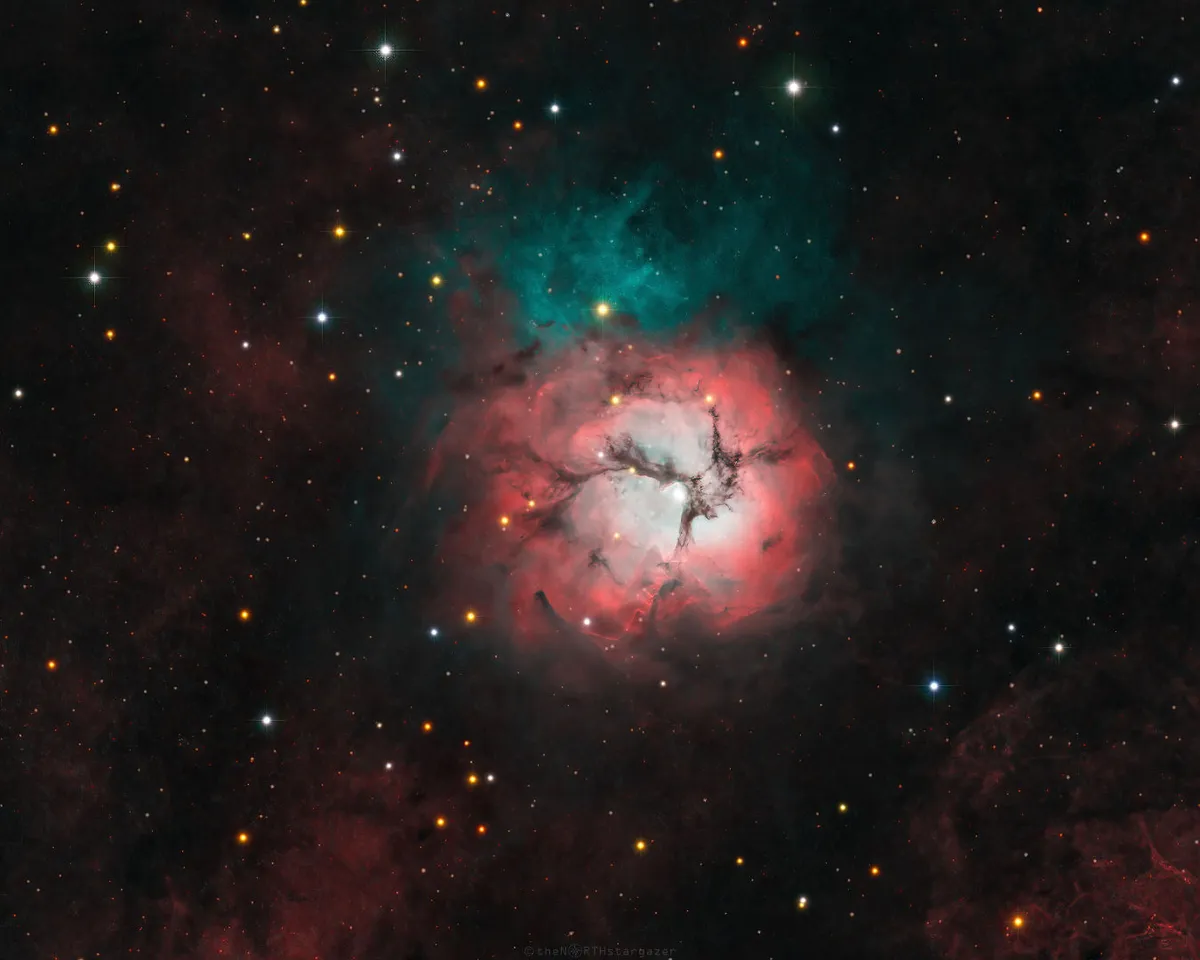
Noticeably dimmer is the Trifid Nebula, M20, 1.5° north and a fraction west of M8. Photographically, it’s a stunning object containing a pink-red emission nebula to the south and dimmer blue reflection nebula to the north. It’s easily visible through small telescopes. A 150mm scope brings out the southern emission lobe and reveals why M20 gets its name: the nebula is trisected by three dark dust lanes.
At the centre of this region is a pair of seventh-magnitude stars separated by 8 arcminutes. Larger instruments should show that each of these stars has a fainter companion. M20’s integrated magnitude is +6.3, the southern emission portion of the nebula appearing 15 arcminutes across.
3 - M21
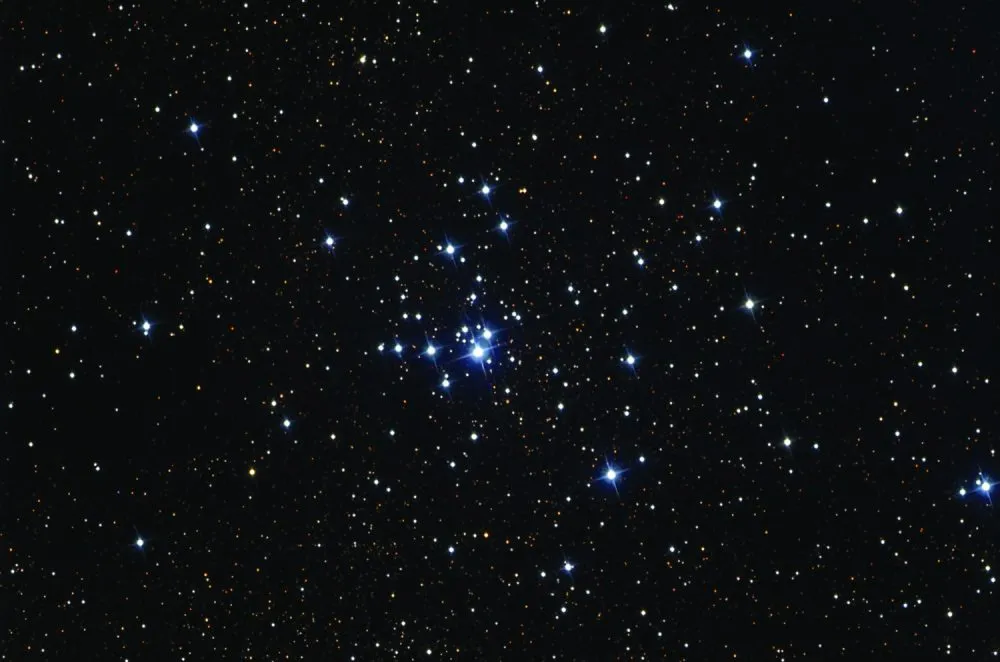
Messier 21 lies 41 arcminutes northeast of the two stars at the centre of the brightest part of M20. Some clusters struggle to be seen in this region of sky, the dense background Milky Way star fields doing an excellent job of disguising them, but mag. +6.5 M21, although relatively small at 15 arcminutes across, has a core that stands out well.
Over 20 stars are visible using a 150mm scope, but the edges of the object do become a little hazy where it merges with the background starfield. A 250mm scope pushes the number of stars seen to nearly 50.
4 - NGC 6440
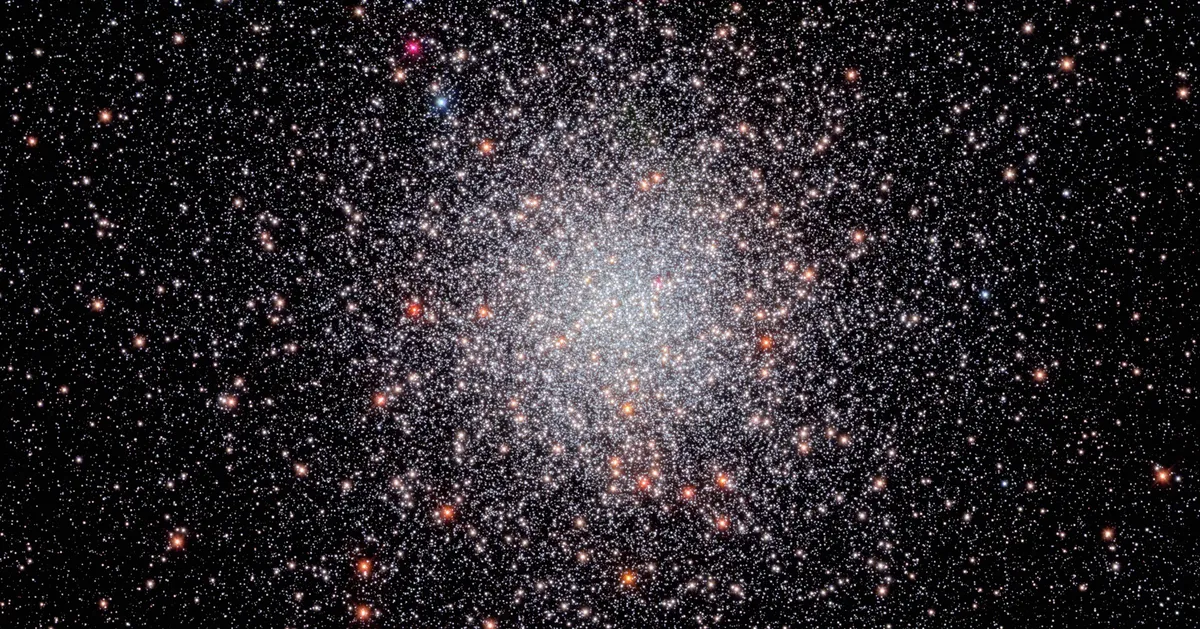
We leave the tried and trusted Messier objects to head a little off-piste for our next target, a mag. +9.1 globular cluster located 4.1° northwest of the two stars we’ve mentioned in the heart of the emission portion of M20. NGC 6440 has a relatively diffuse outer halo that brightens nicely towards its core. A 150mm scope shows the object roughly 2 arcminutes across.
We recommend first locating NGC 6440 using a relatively low power to get some context about where it sits in its surroundings. Centre it in your field of view then increase the power to as high as the conditions will stand. A wider view will show it sitting in a line of four mag. 11–12 stars, two to the northwest and two to the southeast.
5 - NGC 6445

Planetary nebula NGC 6445, also known as the Little Gem or Box Nebula, is located 21 arcminutes north of NGC 6440. If you followed our tip of first locating NGC 6440 with a low-power eyepiece, the chances are you’ve already seen this mag. +11.2 planetary. A 150mm scope shows it as an elongated glow.
A 250mm shows it rivalling NGC 6440 in brightness but appearing less than half its size at 0.75 arcminute across. Through a 250mm or larger scope, at around x200 magnification it has two bright components with a dimmer region between them – the site of a 19th-magnitude central star that’s out of the range of typical amateur scopes.
6 - M23
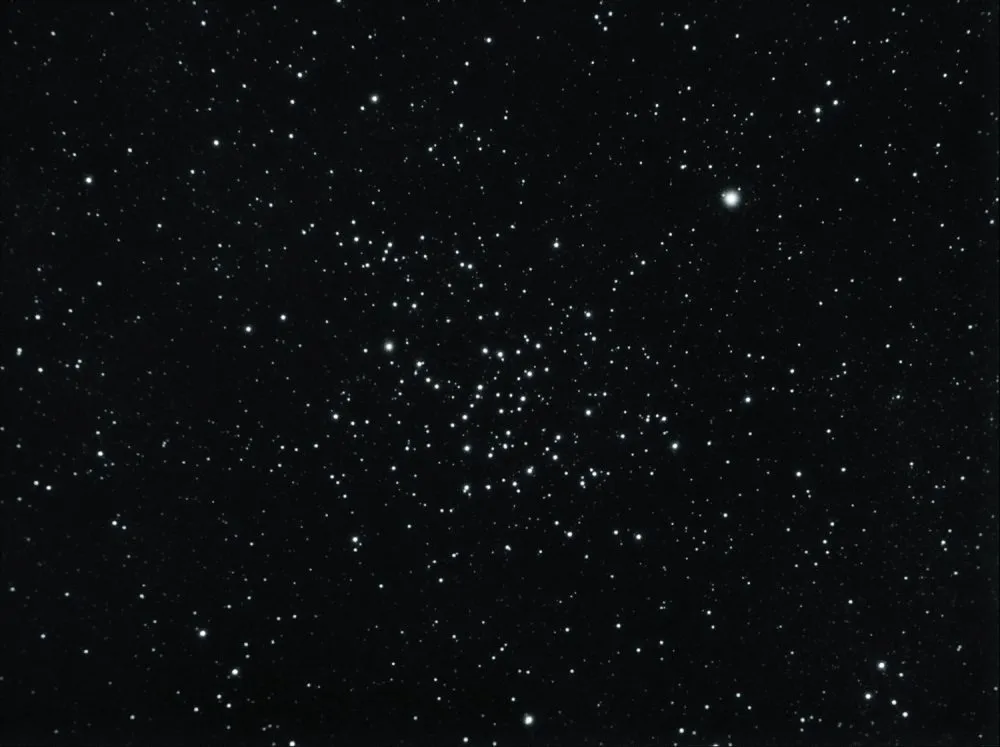
We head back onto the Messier path for our last target, the fabulous open cluster M23. This lies 2° east-northeast of NGC 6445 and shines with an integrated magnitude of +5.5. With a total apparent diameter of 35 arcminutes, slightly larger than that of the Moon, this is an easy object to see with a whole range of scopes.
There’s something wonderful about being able to see many stars clustered together like this, and M23 certainly doesn’t disappoint. Through a 150mm scope, approaching 80 members can be seen, while a 250mm scope bumps this up to well over 100. Take your time looking at M23 and you’ll be rewarded with many curving lines of stars jumping out at you.
Have you observed these deep-sky objects in the Teapot asterism? If so, let us know by emailing contactus@skyatnightmagazine.com
